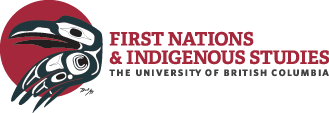In First Nations studies and related disciplines, the investigation of forces that create, shape and regulate identity, and thus influence perceptions of a particular group, is a central concern. Identity negotiations produce categories that can exclude as much as include particular groups of people. These categories create blanket assumptions and stereotypes accepted as natural by outsiders, and may also be internalized by members of the group in question. Identity – and how it is created, maintained and regulated—is a complex topic critical to understanding relationships between Aboriginal and non-Aboriginal groups as well as relationships between Aboriginal individuals and communities.
In this section
- Terminology: Many people find terminology confusing and intimidating. Our terminology guide can help you determine which terms to use in which contexts, while learning the histories behind each term.
- A discussion on Aboriginal identity: Karrmen Crey begins our discussion on identity, its construction, and perception. This section explores who determines identity, and how the government has managed to regulate Aboriginal identity in Canada, and focuses in particular on questions of authenticity: as identity is regulated and negotiated, questions of who qualifies as a “real Indian” arise. This section explores notions of authenticity, and how stereotypes and concepts of “authentic” Indians have developed and continue to have far-reaching implications in the day-to-day lives and experiences of Aboriginal peoples. This section was initially written for students and instructors dealing with issues of Aboriginal identity in the classroom. As such, it may have particular relevance for readers working in academic settings.
- A discussion on identity & terminology: Dr. Linc Kesler continues our discussion on identity. Perceptions of Aboriginal identity can be complex and may have legal implications, and can impact Aboriginal people in far-reaching and surprising ways. In this section, Dr. Kesler discusses the various ways in which Aboriginal peoples in Canada self-identify and are further defined by the state and legislation. In Canadian society, there is a general pattern that Aboriginal peoples experience two sets of definition which operate on parallel and often conflicting paths: one based in law and state regulation, the other in family tradition and community practice. This discussion introduces the complex and problematic nature of categorizing identity.

